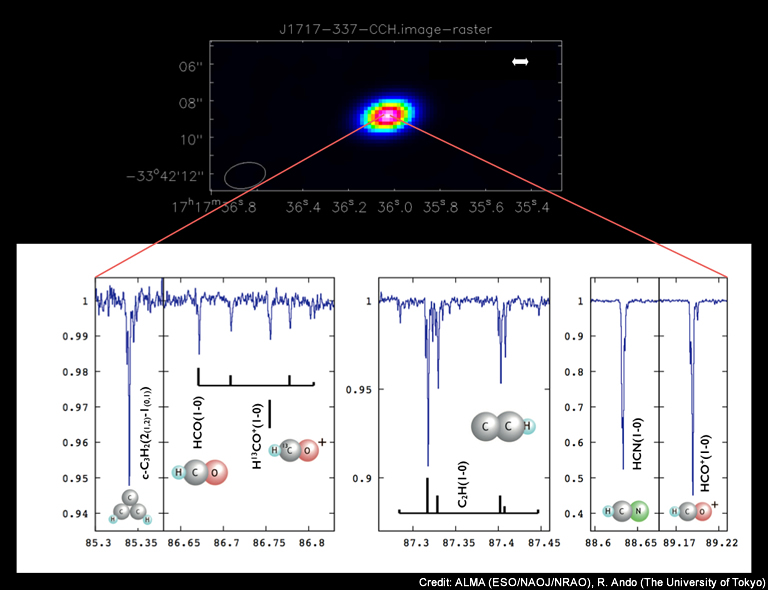Radio Shadow Reveals Tenuous Cosmic Gas Cloud
| Science
This press release was issued by The University of Tokyo on December 7th, 2015 in Japanese. English version is translated by the National Astronomical Observatory of Japan.
Astronomers using the Atacama Large Millimeter/submillimeter Array (ALMA) have discovered the most tenuous molecular gas ever observed. They detected the absorption of radio waves by gas clouds in front of bright radio sources. This radio shadow revealed the composition and conditions of diffuse gas in the Milky Way galaxy.
To calibrate its systems, ALMA looks at objects emitting strong radio waves (radio ‘bright’ objects). On rare occasions, the signals from distant calibrator sources have specific radio frequencies absorbed out of them by foreground gas. These absorption features contain valuable information about the intervening gas clouds which absorbed the radio signals.
To find more absorption systems, a research team including Ryo Ando (a graduate student at the University of Tokyo), Kotaro Kohno (a professor at the University of Tokyo), and Hiroshi Nagai (a project associate professor at the National Astronomical Observatory of Japan) collected the calibration data from the ALMA Data Archive.
By examining data from 36 calibrator sources, the team discovered three new absorption systems and confirmed one previously known system. For one calibrator source, J1717-337, they found absorptions caused by ten different molecules, such as C3H2, CS, and HCS+. In addition, the team found absorption signals caused by HCO molecules for two of the calibrator sources, J1717-337 and NRAO530. The team estimated that the amount of HCO in the cloud backlit by NRAO530 is only half that of other known systems. This shows that it is one of the most diffuse gas clouds ever discovered in the Milky Way galaxy.

Credit: ALMA (ESO/NAOJ/NRAO), R. Ando (The University of Tokyo) Original Size (272KB)
This observation result was published as Ando et al. “New detections of Galactic molecular absorption systems toward ALMA calibrator sources” in the Publications of the Astronomical Society of Japan, issued in December 2015.